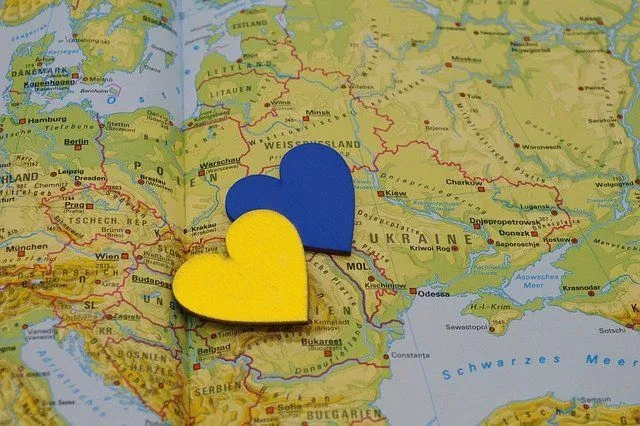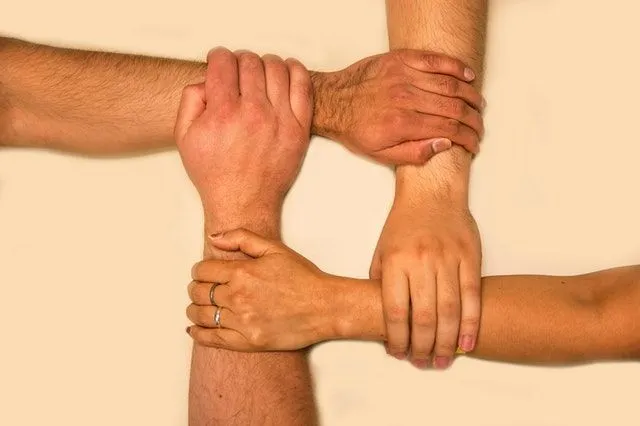FOR ALL AGES
Like us you’re probably facing a number of questions from your kids about the tragedy that is unfolding in Ukraine. Of course we want to protect our children from the horrors of war but we also are duty-bound to help educate the next generation about what is going on in the world around them. We’ve been hearing questions like, “Why are people being killed?", “Is war coming here next?”, “Why are kids like me having to leave their homes?”. These are questions we never expected to be asked, and we hope with the help of Dr Gail Sinitsky, leading child psychologist and the founder of Young and Mighty, we can help you answer them.
Every emotion your child experiences is valid, although it may feel overwhelming to them. Give them space to express their feelings, whether through talking, arts, play or storytelling. This can help with processing and “meaning-making” and can also be a safer and easier way for children to communicate their thoughts and feelings.
Your child may experience a variety of emotions about the war - fear, sadness, confusion, or even indifference. It may be a particularly difficult time for children who have had personal experience of war or conflict, or who have a family member in the armed forces or a friend directly affected by this war.
Sometimes, children who are confused about concepts or topics “fill in the gaps” with their own theories and ideas (or with snippets of things they’ve seen or heard from others) which in turn can exacerbate their feelings. So, give your child an age-appropriate overview of the war. Stick to the facts but also don’t be afraid to share any uncertainty that you may have. Invite them to share any information they have seen or heard (such as, “World War 3 has started”) and then help them to understand what is factual. Importantly, reassure them that they are safe and that leaders all around the world are working hard to bring peace.
It can be helpful for children to read, watch and hear news stories, even if it’s about frightening events such as the war. However, for young children, it would be safest to stick to reputable, child-focussed sites such as BBC Newsround. These sites will use child-friendly language and explanations, and will ensure that more distressing images are not shown.
Some of the current reporting of the war is extremely distressing, even for adults, so it’s important to scaffold what children see and hear, whilst also giving them important information. Be mindful if the TV or radio are playing in the background, and also of anything they may see on social media sites like TikTok.
Overall, it is a good idea to check-in with them regularly: what have you seen/heard? How do you feel? Do you have any questions?
In some ways, it’s unavoidable. The strength of feeling about the war is so powerful that it’s hard to hide. It’s not necessarily a bad thing for children to see their parents sad or scared. It normalises and validates emotions that children themselves experience, too. It is also a great learning opportunity about how to express and cope with difficult feelings in healthy ways. If your child does see you upset, a helpful tip is to “narrate” to your child: “Did you see me feeling sad earlier? Yes I’m feeling very sad about the war and I’m worried for the people in Ukraine. It helped me to cry and I’m also going to speak to my friend about how I feel.” You could also ask your child how it felt for them to see you upset - so that they can express any concerns they have.
One thing to bear in mind is that when parents’ emotions become too overwhelming and all-consuming, children can be left feeling scared or confused. That sometimes can happen if parents don’t have a healthy outlet for their feelings, so it’s really important that we all have support during these difficult times.

This is such an important question because there are words and concepts that adults use in relation to war that can be very confusing to children. Giving children age-appropriate language will be very important in helping them to process and make sense of what is going on. The actual words and concepts you use will very much depend on your child - their age, development and preferences. Some children will appreciate using analogies and metaphors, while others will prefer to understand what different words and concepts mean.

If you’re able to donate items you already have or would like to purchase items to help Ukrainian refugees you can find local drop off points for collections that are being organized near you and your family on social media.
Alternatively if your family would like to make a monetary donation, there a plenty of trusted organizations helping Ukraine including the charities and nonprofits listed below:
Save the Children has created a Ukraine Crisis Relief Fund for donations to aid children across Ukraine at this time of crisis.
Voices of Children, a Ukrainian charitable foundation, exists to serve the psychological needs of children affected by war and is now assisting children and families across the country, including offering help with evacuations. You can donate here.
Sunflower of Peace is a nonprofit that is acquiring and distributing first-aid backpacks, medicine, medical instruments, and other means of survival that are saving hundreds of lives across Ukraine.
The World Food Programme is the U.N.’s anti-hunger humanitarian organization which is bringing emergency relief to Ukraine and bordering countries, aiming to provide food assistance to 3.1 million Ukrainians affected by war.
Care has established a Ukraine Crisis Fund and is looking to provide help to 4 million Ukrainian people, especially women, girls and the elderly.
Doctors Without Borders, which works across conflict zones, has teamed up with volunteers in Ukraine to provide health-care facilities and access to medicines.
Together we can do our bit to help support families across Ukraine. #StandWithUkraine
Read The Disclaimer
At Kidadl we pride ourselves on offering families original ideas to make the most of time spent together at home or out and about, wherever you are in the world. We strive to recommend the very best things that are suggested by our community and are things we would do ourselves - our aim is to be the trusted friend to parents.
We try our very best, but cannot guarantee perfection. We will always aim to give you accurate information at the date of publication - however, information does change, so it’s important you do your own research, double-check and make the decision that is right for your family.
Kidadl provides inspiration to entertain and educate your children. We recognise that not all activities and ideas are appropriate and suitable for all children and families or in all circumstances. Our recommended activities are based on age but these are a guide. We recommend that these ideas are used as inspiration, that ideas are undertaken with appropriate adult supervision, and that each adult uses their own discretion and knowledge of their children to consider the safety and suitability.
Kidadl cannot accept liability for the execution of these ideas, and parental supervision is advised at all times, as safety is paramount. Anyone using the information provided by Kidadl does so at their own risk and we can not accept liability if things go wrong.
Kidadl is independent and to make our service free to you the reader we are supported by advertising.
We hope you love our recommendations for products and services! What we suggest is selected independently by the Kidadl team. If you purchase using the buy now button we may earn a small commission. This does not influence our choices. Please note: prices are correct and items are available at the time the article was published.
Kidadl has a number of affiliate partners that we work with including Amazon. Please note that Kidadl is a participant in the Amazon Services LLC Associates Program, an affiliate advertising program designed to provide a means for sites to earn advertising fees by advertising and linking to amazon.
We also link to other websites, but are not responsible for their content.
Was this article helpful?

We’ll send you tons of inspiration to help you find a hidden gem in your local area or plan a big day out.



Check your inbox for your latest news from us. You have subscribed to:
Remember that you can always manage your preferences or unsubscribe through the link at the foot of each newsletter.